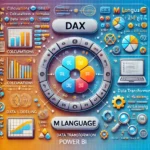SPSS vs. SAS: A Battle of Data Analysis Titans
In the realm of data analysis, choosing the right tool can make a significant difference in the quality and efficiency of your work. Two giants in the field of statistical analysis and data management are IBM’s SPSS (Statistical Package for the Social Sciences) and SAS (Statistical Analysis System). In this blog post, we will explore these two powerful platforms, highlighting their strengths, use cases, and differences to help you decide which one is best suited for your data analysis needs.
Understanding SPSS:
SPSS, developed by IBM, is a versatile software package known for its capabilities in statistical analysis. It is widely used in various fields, including social sciences, healthcare, and market research.
Key Features of SPSS:
- Statistical Analysis: SPSS offers a comprehensive suite of statistical tests and procedures, making it ideal for in-depth data analysis.
- Data Visualization: While it provides basic data visualization tools, SPSS primarily focuses on generating detailed statistical outputs.
- Data Preparation: SPSS excels in data cleaning, transformation, and management, ensuring data quality and integrity.
- Advanced Analytics: It supports complex statistical modeling, regression analysis, and factor analysis.
- Reporting: SPSS generates detailed reports, tables, and charts for presenting analysis results.
Exploring the Power of SAS:
SAS (Statistical Analysis System) is a robust and comprehensive software suite specifically designed for advanced analytics, business intelligence, and data management.
Key Features of SAS:
- Statistical Analysis: SAS offers a wide range of statistical tools and techniques, including advanced analytics and machine learning algorithms.
- Data Management: It excels in data manipulation, integration, and cleaning, making it suitable for large-scale data projects.
- Data Visualization: SAS provides data visualization tools to create interactive and informative reports and dashboards.
- Advanced Analytics: SAS is renowned for its predictive modeling, data mining, and machine learning capabilities.
- Integration: It seamlessly integrates with other SAS products and can connect to various data sources.
https://synapsefabric.com/2023/09/01/spss-vs-sql-choosing-the-right-data-analysis-approach/
SPSS vs. SAS: A Comprehensive Comparison
Let’s delve into a detailed comparison of SPSS and SAS across various dimensions:
| Aspect | SPSS | SAS |
|---|---|---|
| Primary Use Case | Advanced statistical analysis and research. | Comprehensive analytics, business intelligence, and data management. |
| Data Visualization | Primarily focused on generating detailed statistical outputs. | Offers advanced data visualization capabilities for interactive reporting. |
| Data Preparation | Robust data cleaning, transformation, and management features. | Strong data integration and manipulation capabilities, ideal for big data projects. |
| Advanced Analytics | Strong support for complex statistical analysis. | Extensive support for predictive modeling, data mining, and machine learning. |
| Learning Curve | Steeper learning curve due to complex statistical concepts. | Moderate learning curve, with a range of training resources available. |
| Automation | Supports automation through syntax scripting. | Offers automation features for streamlining data processes and analytics. |
| Data Source | Suited for structured datasets, common in research and surveys. | Suitable for structured and unstructured data, including big data sources. |
| Licensing | Available through individual or institutional licenses. | Typically requires a subscription or enterprise-level agreement. |
Making the Right Decision:
The choice between SPSS and SAS hinges on your specific data analysis needs and the scale of your projects. If you require advanced statistical analysis with a focus on research or social sciences, SPSS may be the better choice. On the other hand, if you need a comprehensive analytics platform for business intelligence, predictive modeling, and handling large-scale data, SAS stands out.
It’s worth noting that the two tools can complement each other in certain scenarios. You might use SPSS for initial data analysis and then transfer data to SAS for advanced modeling and integration with big data sources.
In conclusion, both SPSS and SAS are potent tools in the data analysis arena, but they cater to different needs and scale requirements. Your decision should align with your specific goals, the complexity of your data analysis tasks, and your familiarity with the tools. Understanding their strengths and differences is key to effective data analysis and management. Whether you’re a researcher investigating statistical relationships or a business analyst seeking to uncover insights from large datasets, the choice between SPSS and SAS ultimately depends on your unique objectives.






